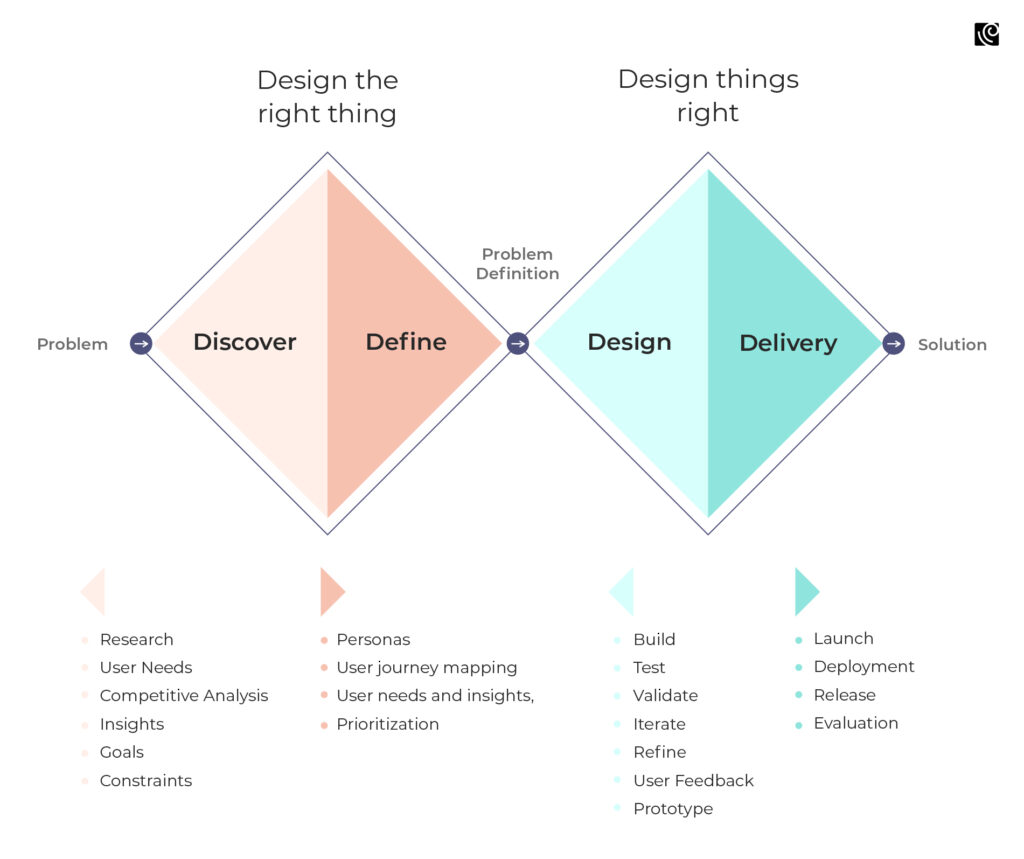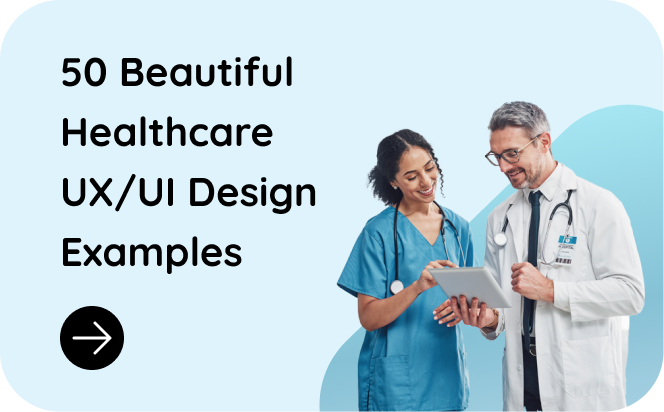The healthcare industry might have dodged a pandemic bullet, but it’s still in the throes of a series of long-standing crisis.
It’s a draining experience for the users.
It’s overwhelmingly bureaucratic.
And it’s perilously close to collapse.
Physician burnout has exploded with over half (47%) of US physicians reporting at least one symptom of burnout. Meanwhile, EHR systems have proven to be a double-edged sword — physicians spend nearly two additional hours on EHR for every hour of direct patient care. Additionally, the digital experience stands as a glaring issue in insurance platforms — A staggering 74% of health plan members expressed dissatisfaction due to unreliable information provided by their plans.
As we peel back the layers of these complex issues, the root cause becomes strikingly clear: Lack of user-centered design.
The understanding of “user-centered design” or UX in healthcare is, at best, cloudy. Product leaders run the risk of creating solutions that cater to the needs of administrators, not the end-users – the doctors, insurers, care deliverers, patients, etc. who are interacting with these systems daily.
Let’s explore how UX design can help transform these big challenges into product wins, and better healthcare outcomes, and show product leaders the way forward.
The Ripple Effect of User Experience on Digital Healthcare Products
Healthcare UX design is about minimizing friction, maximizing usability, and creating positive experiences that make it more accessible and manageable for all users.
When it comes to the healthcare ecosystem, we’re not just dealing with a simple user and provider scenario.
No, it’s a convoluted network of numerous tools, varying user roles, and delicate dependencies.
It’s abuzz with a gamut of digital tools — electronic health records (EHRs), insurance apps, pharmacy apps, specialized apps catering to distinct conditions or functions, payment platforms, patient portals, and a whole lot more.
These tools don’t operate in silos, but rather, they interact, creating a web of digital threads spanning the healthcare landscape.
Users too, straddle a broad spectrum. From clinicians to non-clinical professionals like reception staff, pharmacists, and insurance personnel, right through to the patients themselves or their care deliverers. Add to that — a dynamic canvas featuring varied age groups and abilities.
Now, here’s the kicker. A minor blip in the design of these tools can trigger a cascade of complications, causing ripples throughout the entire ecosystem.
You don’t know how far your design decisions can go until you design for Healthcare and a doctor prescribes the wrong dosage because your UX was crap.
— Design Chief Priest (@dnaijatechguy) March 14, 2022
Your bad UX decision might just have killed someone.
Take, for instance, an unintuitive feature in an EHR system. It could lead to physician frustration, compromised patient care, and eventually, contribute to the burgeoning problem of provider burnout.
On the flip side, a well-designed feature in the same EHR system can streamline tasks, save time, and significantly reduce physician frustration. Better workflow leads to enhanced patient care and leads to overall better medical outcomes. A small improvement in healthcare UX design, then, can create a positive ripple effect, promoting efficiency and satisfaction throughout the entire healthcare ecosystem.
How Can Product Leaders Transform Healthcare Delivery Through UX Design
What does good healthcare UX design mean?
It’s when information is not just a click away but also crystal clear and easily actionable. But with a setup as complex as we talked about in the above section, achieving this simplicity is nothing short of a Herculean task. But hey, no pressure. Let’s take a deep dive into this unchartered terrain.
A User-Centered Culture is the Cure for Bureaucratic Ailments
Building a user-centered culture starts with making a case for user needs and its potential business impact in front of your stakeholders. It’s essential to shift the mindset from solely business-oriented to a user-oriented approach.
You can put forward statistics and real-time case studies to make a case for UX. For instance, Hospitals in the U.S. that go the extra mile to provide a top-notch patient experience are seeing their net margins grow – by a hefty 50% more than hospitals delivering only an “average” patient experience.
To overcome similar issues, we, at Koru, employ a Double Diamond design methodology that represents a four-phase approach to problem-solving: Discover, Define, Develop, and Deliver. This structured process ensures that we explore a wide range of ideas and then narrow them down to the best, ensuring user needs are at the heart of our solutions.

Let’s look at some strategies for product leaders to cultivate a user-centered culture among their organizations:
- The prescription starts with a deep and authentic understanding of your users’ pains and frustrations.
- Move away from “what you think they need” to “what they truly need.”
- Regularly share user research findings with your stakeholders. This not only keeps them updated about the users’ needs but also highlights the value of UX research.
- Make it a point to link user-centered design decisions to tangible business outcomes like increased customer satisfaction, reduced burnout, increased sales, and so on.
Give Usability Its Due
For the past 20 years, digital healthcare has been in a relentless pursuit.
The suppliers, trying to outpace their competitors, keep adding more to the “what it does” than the “how it does it”. Meanwhile, the customers, fixated on the ‘doing’ part, grab these systems off the shelf, oblivious to their user-friendliness.
And the users? They’ve been primarily looking for a system that ticks their list of functionalities. In this race, usability has been left panting far behind.
An apt case in point is our work on simplifying a Medicaid application process in the United States. The existing system, with its complex eligibility determination process, was cumbersome and led to a slow rate of enrollment, especially for senior citizens who could significantly benefit from these medical care services.
Our primary objectives were to design non-intimidating interactions for the senior applicants and simplify workload management for field agents. The focus was not just on what the application could do, but how it did it – usability was at the forefront of our design and development process.
The end results? A tool that broke down barriers and made healthcare benefits more accessible for nearly 16 million disabled and elderly beneficiaries.
You Must Advocate For A Metric-Driven Research
According to Global Wire, the Healthcare Analytics Market Size will be Worth US$ 52.2 Bn by 2026. The average CAGR will touch 36.6%.
In the healthcare industry, decisions often rest in the hands of the highest-paid person – a dynamic that may not always result in the best outcomes for users. Instead, decisions should be driven by data, with user needs and experiences taking center stage. In one of our on-demand webinars, our guest Jared Huke, CEO of Daito Design and a leading UX practitioner, talked about using data to draw user insights and effectively improve experiences. This also applies to healthcare delivery:
Abandon Assumptions: It’s easy to fall into the trap of assuming you know what your users want. However, these assumptions often lead you down the wrong path. Instead, focus on collecting and analyzing data to understand the real needs and experiences of users.
Identify and Resolve Issues Early On: Data can help you identify issues early in the design process, preventing costly do-overs.
The costs incurred from post-deployment modifications can be a whopping 10,000 times more expensive than getting it right from the start.
Jared Huke, CEO, Daito Design
Leverage Data to Design Better Experiences: In traditional healthcare settings, administrative needs often drive system design. However, by leveraging user data, product leaders can shift this paradigm to design systems that cater to everyone involved in the process.
Streamline Your Systems for Integrated Care
While healthcare has advanced leaps and bounds in terms of technology and innovative practices, a fundamental flaw still haunts the system – the lack of integrated care. By this, I mean the continuous, comprehensive, and coordinated care delivered across different providers and settings. It often results in a lack of unified understanding, leading to potential miscommunications, redundancies, and inefficiencies.
Imagine this — a physician having to treat multiple patients, each one having different health concerns. The patient data is fragmented due to different systems and processes in place, leading the physician to provide care based on incomplete patient data. None of the systems allow the physician to have the full picture of the patient’s health.
This scenario was all too common until we, at Koru decided to tackle it head-on. EHRs, in their complex and unwieldy design, became an intrusive obstacle in the healthcare delivery process for one of our clients. Providers found themselves overwhelmingly occupied with navigating these systems, detracting from their attention to the patient.
We decided to change this narrative. Our objective was to create a simplified snapshot of the patient’s vital details, designed to allow providers to quickly process and act on it. Our aim was to steer the focus back to where it belonged – on the interaction between provider and patient, rather than the overwhelming demands of EHR usage.
Through our efforts, we were able to restructure the EHR experience. By prioritizing a user-centered design, we put the focus back on the needs of the physicians and patients, allowing for more efficient and personalized care.
A Revitalized Journey Awaits: Embracing UX for Healthier Healthcare Ecosystems
Yes, healthcare UX design has been notorious for its clunkiness, mainly due to the industry’s complexity and the variability of the users. But the mere presence of complexity cannot be an excuse for ignoring usability attributes. Product leaders must strive for solutions that solve a problem (useful), are intuitive and functional (usable), and offer an experience that users prefer over others (desirable).
It has been proven that the impact of UX on product success in the healthcare sector is higher than average across industries. Healthcare is essentially innovation-driven, where technology has helped transform the market landscape. Therefore, new product design and development processes are crucial for market success. Needless to say, UX plays a significant role in creating effective products.











